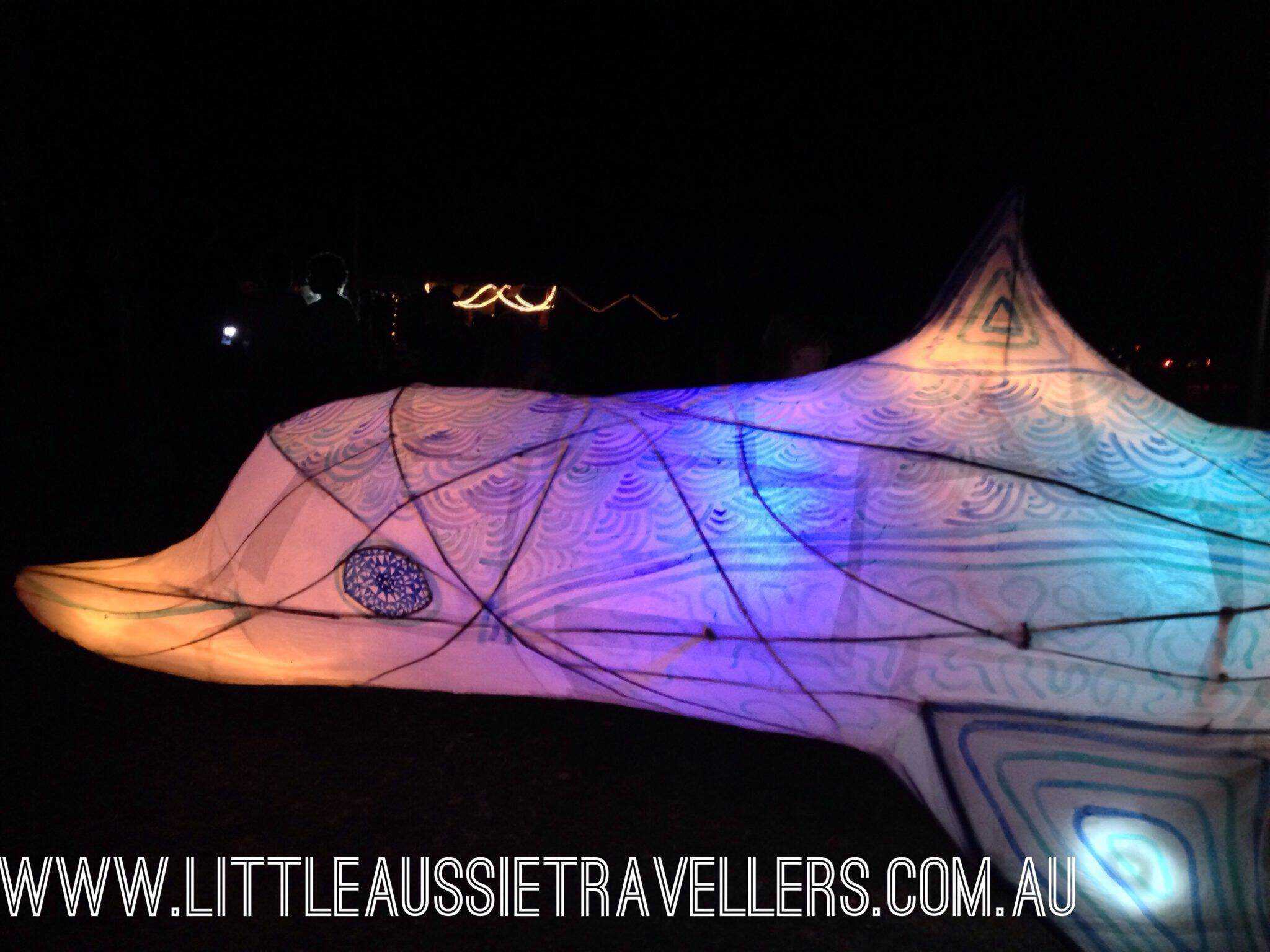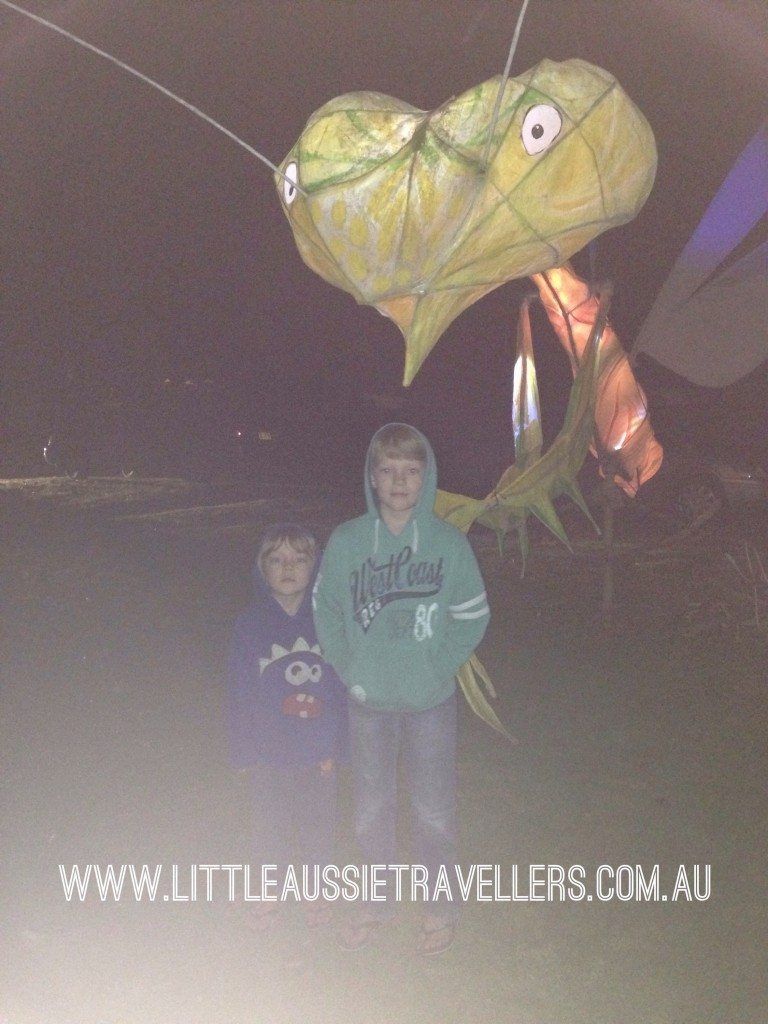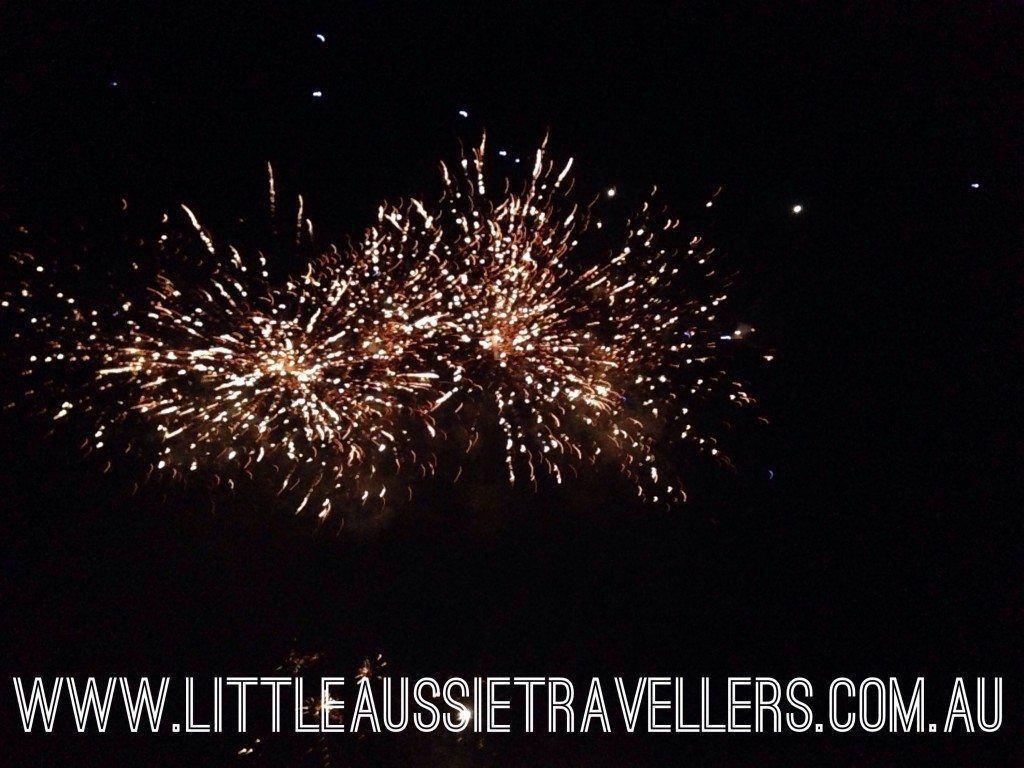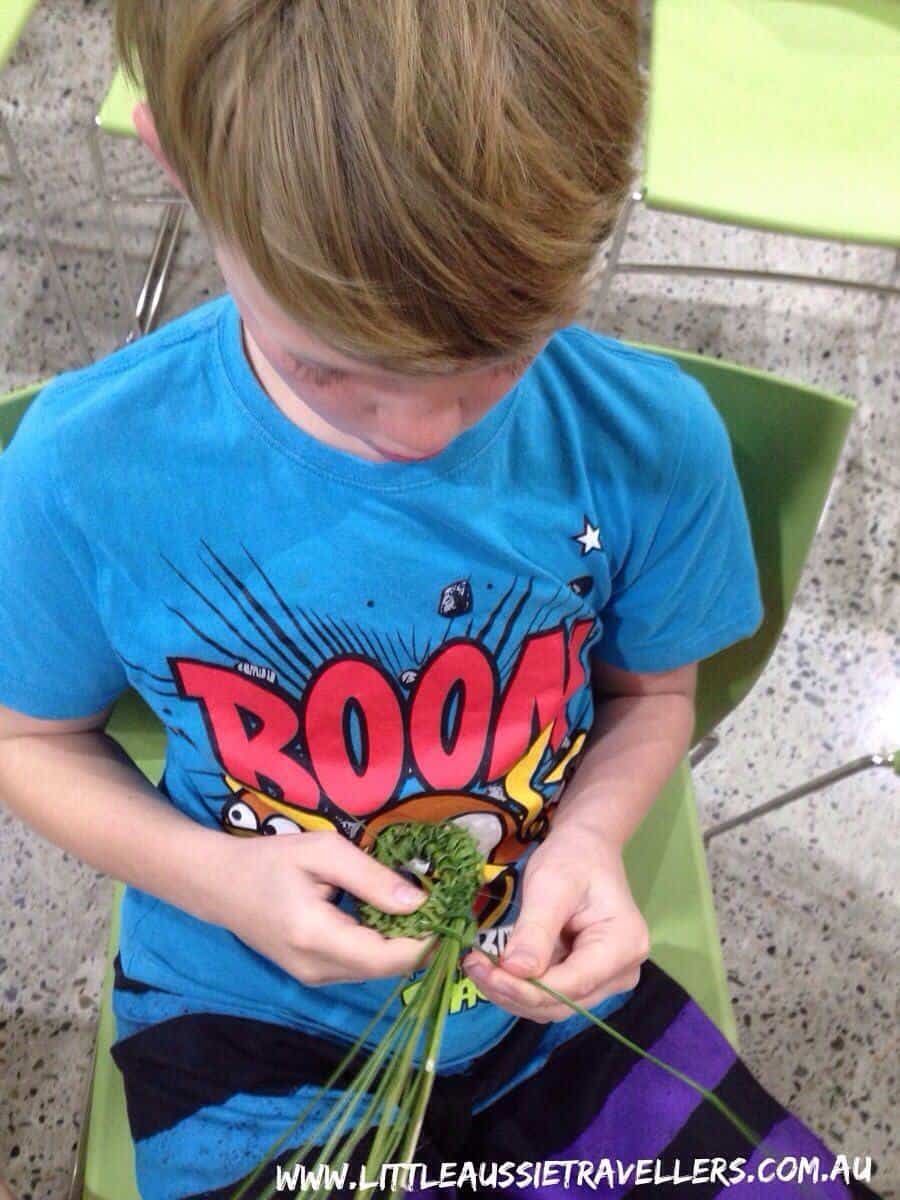
by Loreena Walsh | Featured Posts, Indigenous Culture, TAS Destinations & Activities
I’ve written many times about how we fell in love with Tasmania, but perhaps one thing I haven’t spoken enough about, is the Indigenous history of Australia’s island state.
There’s a reason for that; during our 3 months in Tasmania, although we learned a lot of history, I’m sad to say we didn’t learn much about Tasmania’s first peoples. There were snippets on a couple of signs, and a small amount I managed to track down at Port Arthur, but sadly I don’t feel there’s enough information in general tourist areas. There may be more accessible information on Flinders Island, Bruny Island or Maria Island but we didn’t make it to any of those, so perhaps that’s why we didn’t see more?
As someone majoring in Indigenous Studies, and because I wasn’t satisfied with what I learned, I’ll tell you what I know myself, and I hope, if you visit, you’ll track down something wonderful and send me information. I do intend to re-visit Tassie and track down more for myself.
I set off on our adventure keen to uncover how settlement may have affected Indigenous peoples in Tasmania, who before settlement knew the island as lutruwita (lu-tru-wee-tah). In 1803 settlers arrived to form Australia’s second British colony at Risdon Cove, and it was named Van Diemen’s Land as part of the New South Wales settlement. In 1856 the island was granted self-government and the name officially changed to Tasmania. Of course, I realised that just like every part of Australia, settlement was likely a destructive time for Indigenous populations, but how destructive? What happened? Did any clans survive on their own lands? What was the initial reaction from either side?

Unfortunately, the story isn’t a kind one.
Before settlement it is believed there were nine Indigenous Nations living on Tasmania, who traded with European sealers with very little animosity, but once settlement began, Indigenous peoples were pushed off their lands in order for settlers and convicts establish colonies and farmland. Land would be fenced off and distributed for farming and cropping, but when Indigenous peoples rely on their homelands for food and water, to fence this off means desperation and lack of ability to survive.
If you’d been living peacefully on lands for no less than 35,000 years and all of a sudden found your lands fenced off resulting in your family starving, what would you do? Of course you would need to fight, you would be driven to fight; fight for the right to eat, and stay alive.
Most people don’t understand that for the most part, Indigenous Australians were not historically a nomadic peoples, instead they existed in designated lands which they cared for and used to sustain all they needed, sometimes trading with neighbouring Nations for tools or foods they may not have access to on their own Country. So it was not as simple as being kicked off one area of land by settlers and moving on to somewhere else, Indigenous peoples could not just take over someone elses lands. Sadly this is the theme right across Australia, not just Tasmania, but on an Island state so small, losing lands would have had horrific consequences.
Lieutenant-Governor Arthur declared martial law in 1828 resulting in Aboriginal clans being forced out of areas and away from white settlers, murdered or incarcerated. Those who were not forced out were decimated by European diseases which killed many Indigenous peoples who had no immunity to such health issues.
Surviving Indigenous Tasmanian peoples were forced onto Bruny Island, Flinders Island, and other areas, where most died due to poor conditions and disease, before a settlement at Oyster Cove was formed and those who survived were mostly left to their own devices there.
There is, today a Tasmanian Indigenous population who have worked hard to revive and continue Indigenous language and connection to land and culture, so as proven right across Australia, our First Peoples are resilient and determined and this should be celebrated.
My Most Treasured Indigenous Insight While In Tasmania.
One area we did visit that holds Indigenous significance is Recherche Bay.

Many people would have heard of Truganini (1812-1876), a brave and amazing Aboriginal woman who survived the destruction and decimation of her peoples, caused by white settlement.
Truganini was born in Recherche Bay, daughter of the leader of the region. While much of Truganini’s family were brutally killed, Truganini travelled with her partner Woorraddy who accompanied George Robinson, serving as a guide and interpreter, during attempts to relocate Indigenous populations to several island settlements. During this time, Truganini became disollusioned with Robinson’s mission, realising that his attempt to remove and relocate Aboriginal peoples would all but remove the chance for traditional Indigenous life in Tasmania, and instead urged her peoples to stay and with them settled at Oyster Cove.
Truganini passed away in 1876, and is believed to have been the last surviving full-blood Tasmanian Aboriginal person. While fighting occured when her remains were recovered from the Hobart Female Factory site in 1878 after much protest and fighting, in 1976 her ashes were scattered on the D’Entrecasteaux Channel, fulfilling her wishes almost one hundred years after her death.
I, stood, one small person looking out the the D’Entrecasteaux Channel, and Recherche Bay, and with my standing, felt the gravity of settlement, the pain of a peoples who did not ask for us to be here, and the pain of one woman who fought for survival for herself and her peoples.
In all this sadness I felt a renewed hope that as a country we can move forward. We can never undo what has been done during the devastation caused by settlement, but we can be mindful and reflection and acknowledge that while we have grown into an amazing country, this has not been without loss and pain.
Together, as a united country we must not lose sight of the most important part of this country. The land. It has nurtured a culture now considered the oldest continuing living culture in the world, and we must care for the land so it continues to nurture the people who now call it home.

Do you have an interest in Indigenous History or special memories of Tasmania? Share below.

by Loreena Walsh | Indigenous Culture, NSW Destinations & Activities
You’ll rarely hear me call Kempsey home. I wasn’t born there, but I did live there through my teenage years, and I met Matt there (during our highschool years), but for little fault of it’s own, Kempsey has never really felt like a positive place for me.
It was where I got my first job, my first boyfriend and completed highschool, and where I always felt I’d “escaped” from, as soon as highschool was over.
I’ve begrudgingly returned back on many occasions, swearing it was a place I’d never live again, stopping in only to visit family.
You know what’s sad about that?
Kempsey and the Macleay Valley Region is an amazingly beautiful place.
We’ve been back in the region longer than we’d planned, and we’ve been making the most of it. We’ve been heading to Crescent Head regularly and I love that little town; it holds memories of my teens and it’s a stunning place to let the ocean soothe your soul. We’ve been swimming in the river; the same one I spent many summers cooling down, even though the water levels are really low at the moment, the kids had a great time, and we’ve experienced some wonderful community events.

But, while I’ve always felt quite a negative attitude to Kempsey, I’m glad I’ve had the chance to have my mind changed, and I’m happy to eat my words!
The Macleay River Festival.
We’ve taken the time while we’ve been here to get out and about and enjoy some events within the community, and what can I say, but I am so glad to see such positive events taking place in Kempsey. I’ve written before about the joy I feel in learning about Indigenous history in this region and others, and after doing some reading I found this festival was a celebration of the river, of Indigenous peoples appreciation of the river, and also the joy and importance the river has in contemporary society today.
Kempsey was settled on the land of the Dunghutti, “of which there are four tribes Dangaddi, Dainggati, Thungutti and Djunghatti” (Macleay River Festival, 2014)
The river is a central part of Kempsey; it sustains life, it brings devastating flooding, it is mother nature at her most beautiful. It was wonderful to see, that in the spirit of the river, the community of Kempsey connected, together, celebrating, as one peoples.

The festival was inspired as a celebration of the river, the area and the Indigenous peoples that have called Kempsey home for thousands of years. From the festival website:
“festival aims to showcase the spirit and diversity of culture and experiences in the Macleay.”

Well, what can I say, but the festival was an amazing success. With an amazing mix of culture, art, markets, music, comedy, local performers and a relaxed laid back atmosphere that families could enjoy, we all had a wonderful time.

While Kempsey may be an area that has had it’s problems, and suffers many of the same issues that other low socio-economic towns experience, seeing the community togetherness and celebration was heartwarming and a positive sign that the community can strengthen and create a wonderful culture of togetherness and joy in the natural beauty the region offers all people who live here.

Kempsey Twilight Market
We returned back to Riverside park in Kempsey to watch the fireworks that were some of the best we’ve ever seen for the Kempsey Twilight Market. The markets are always a wonderful mix of food, craft, clothing and art as well as nick-nacks and entertainment. I did a little clothes shopping, and even in the rain, crowds gathered to watch entertainment from local school students, and the fireworks seriously went for what seemed like forever and the kids were over the moon.

So I have to admit, I’ve admitted, I’ve been a bit rough on Kempsey all these years…..

When you’ve spent years being stubborn and being negative about a region, sometimes it pays to give it another chance. There is lots about Kempsey that’s great, and I’m glad we’ve had the opportunity to see it all with fresh insight.
So, if you’re visiting the Mid North Coast of NSW, then be sure to stop in and visit.

by Loreena Walsh | Indigenous Culture, NSW Destinations & Activities
The best kinds of days are those you think are going to be good, and instead they end up being great. Today was one of those days. We were treated to an afternoon of Aboriginal culture, music, art, craft and great conversation with some wonderful, amazing hosts. We took part in Sea Acres Rainforest Centre’s “Aboriginal Art in the Rainforest” activity.
I’m beginning this blog post with a big hello to Aunty Rose, who took details of our blog with her today so she could take a look. Hi Aunty, and I hope you enjoy looking around the site. Then, another huge thank you for being so welcoming today to local artists Aunty Debb Robinson, Aunty Leah Bale, and Russell Moran you all ensured we had a wonderful afternoon full of both education and lots of fun!

As some of you will know, I returned to University a couple of years ago to do my degree in Indigenous Studies. This decision was driven by my respect and passion for the amazing Aboriginal culture, hunger for knowledge and understanding, and the ability to ensure that I can be a positive part of ensuring that Australia does not lose this amazing history, and above all that my children grow up with respect and knowledge.
My belief is, that no matter what your cultural background, it is important for every Australian to embrace Aboriginal culture and celebrate the stories, beauty and spirit of the lands on which we all live here in Australia. So, when I get the chance to celebrate, share and learn about our home region with my kids, I always love to do the activities at Sea Acres Rainforest Centre.

We received a welcome to country from Russell, and did some singing along with Aunty Debb, who is a great singer. Then we were treated to the Kamilaroi people’s story of the “Emu in the Sky” which gave me goosebumps. The Emu in the Sky story shares knowledge of the changes to the milky way, and the connection of the appearance of an Emu amongst the Milky Way and the breeding cycle of the Emu on the land. These changes would signal to the Kamilaroi when they could collect emu eggs, and when they must stop. We also learned how the Koala lost his tail.

No matter how many dreaming stories I hear, I am forever in awe of the connection of the plants, the waters, the stars and planets and the animals on the land. Everything is so connected, and I wish people in general understood and appreciated this more.

The kids really enjoyed doing painting activities of native animals, the boys in their usual style chose to paint geckos. They still miss our pet reptiles and are forever on the hunt for snakes and lizards while they are out exploring so it was an easy pick.

My personal favourite part of the day was the weaving workshop. Our first visit to the Northern Territory was the first time I saw weaving, and from that moment I was in love with the earthy beauty of bowls, bags, floor mats, wall hangings and all of their variations, woven by hand.
I have longed to learn the art of weaving, and I was overjoyed to get the chance to learn, alongside the kids and it was so much fun. Aunty Leah was telling us of a weaving project that stands as tall as herself, which took her three months to complete. Our first efforts aren’t particularly neat, but we’re definitely going to try harvesting our own Lomandra and getting in some more practice. It is a lovely, calming activity and my soul was as happy as I thought it would be, finally gaining an understanding of the process.

So, if you’re ever in Port Macquarie or surrounds during the school holiday period, then I can highly recommend taking part in any of the cultural activities on offer. We’ve been before and we’ll return again if we’re in the area.
A huge, huge, huge thank you again to Aunty Debb, Aunty Leah, Aunty Rose and Russell. I had a great day chatting to you all, and the kids had a wonderful day learning and doing the activities.

by Loreena Walsh | Indigenous Culture, Thoughts & Ideas
Each decade of our lives brings with it new perspective, new insight, new ideals.
As each decade passes, and I reflect on the me of years gone by, I realise just how different my perceptions of the world have become. If you’d asked me in the past what Australia Day meant to me, I’d have given a wide range of answers.
Some of those answers would possibly have included:
- A day to celebrate our history.
- A day to spend with friends and family.
- A public holiday off work.
- Being proud to be Aussie.
I’m guessing that for most people, Australia Day does mean something like one of the above, or very similar. But I’ve also come to know in recent years, that for some people, Australia Day has become a stark reminder that their lands were invaded and their culture stripped away slowly and painfully. Their culture is still clinging to a fragile existence in a country that doesn’t seem to care.
When I was Growing Up….
I was raised by a hard working “Aussie” Tradie, and the values he spouted over my childhood are pretty far removed from the values I hold as an adult. I grew up in the 80’s, a time of work hard for little, spread your money around as best you could, and raise your family in the Aussie, beer drinking, BBQ cooking kind of way. Where “Greenies” were ruining people’s jobs, and unless you were “white” you weren’t really all that important, and god forbid you questioned your own sexuality, that sort of foolery was intolerable!
In all fairness, my dad has either mellowed or become so tired of me ranting about equality and the environment he’s chosen to agree with me for the sake of peace! He’s a good man, but I’m so glad that our generation seems to question what we are “fed” rather than just go along mindlessly.
When I Discovered Australia’s Secret Shame!
Yep, you read it right, Australia hides secrets, ones that need to be blown into the limelight! Until my mid 20’s I’d never really left the safe surrounds of the coast, tourism areas or main country towns. I was blissfully unaware of what I didn’t know, and then a few years ago we set off on a camping trip from Darwin to Adelaide. So excited to see things like Kakadu and Uluru, we were looking forward to discovering the “real Australia”.
What we found was not only that there are places in this country more beautiful than you can ever imagine, but sadly that there are people in this country that are forgotten about, used for political leverage, and left to live in squalor in shameful slums that most of the country don’t even know exist.
We discovered that Indigenous Australians are suffering. They are being tucked away, their needs dragged out and spoken about only when a political party needs to gain a vote, or the government wants some of the land they occupy to grant mining leases and rake in cash. There are real people, real families, real stories and there is real sadness spread across the heart of our country. There is a real culture that is dying, much of which has been lost forever and this will continue to happen unfortunately unless change is made quickly. The reality is, so few of us realise just how bad it truly is.
Why Australia Day is Important.
- Australia Day is truly important, because EACH AND EVERY PERSON IN AUSTRALIA IS IMPORTANT.
- Australia Day needs to be a day to celebrate our growth as a country.
- It needs to be a day to celebrate progression toward equality on all levels.
- It needs to be a day that cultures blend and share, merge and combine for good.
- It needs to be a day that we hold our government accountable to be sure they are truly leading our country in a way we can all be proud of.
- It is a day where history must be acknowledged and a path to move forward TOGETHER is celebrated.
The truth is that you don’t know what you don’t know until you know it. I didn’t know, but I want you to just consider for a moment, the pain at having everything you have known ripped away from you, ripped away from your family just a couple of generations ago.
I want you to understand that raw emotion and raw pain, causes a huge amount of sensitivity around this issue. I want you to be brave to learn about the possibilities of acknowledging our past as a country and then standing together to move forward.
I am really very, very passionate about indigenous issues, and it saddens me that sometimes Australia Day brings about debate, name calling and sometimes even violence. I truly believe that we can find solutions, that the more people who understand just how “hidden” the realities of Indigenous issues in Australia really are, the more people who learn to discover for themselves, beyond what the media or the government report, but to really learn, embrace and understand.
It is then we have a chance to make a change, so that ALL Australians can be proud, so that we can all walk together as one, and so that indigenous poverty in remote Australia is put to an end!
I hope you all had a great Australia Day, it’s a wonderful day and we should all be proud of our wonderful country, just as we should be using our voices to ensure our country only gets better, stronger and becomes the safe haven for all those who live here!

























